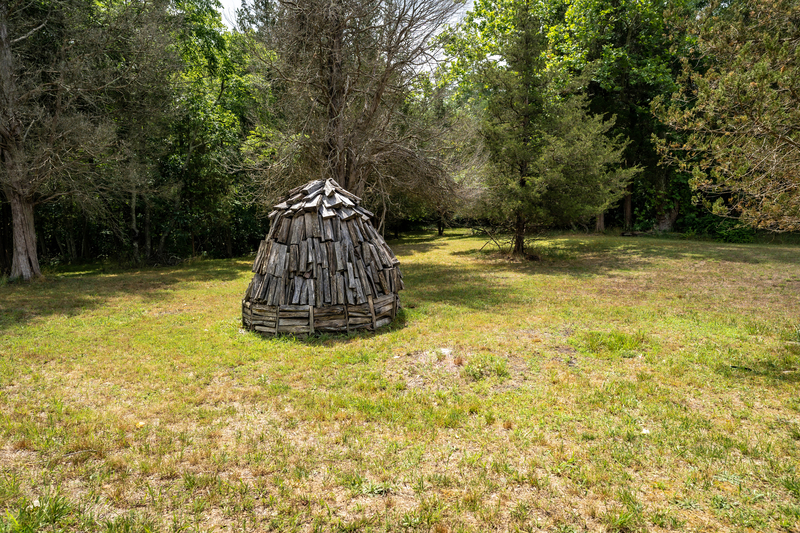BATSTO, NJ – If you’ve ever been to Batsto, New Jersey, you might have seen this wood pile and wondered why it’s there. What significance does a stacked wood pile have in a historical, working 18th century village, and why should we care about it?
Was it some Piney ritual? Was it connected to South Jersey’s 20th-century ties to the Klan? What is it doing there?
A once-thriving industry quietly shaped the region’s economic and environmental landscape in the dense forests of the New Jersey Pine Barrens. From the 19th to the early 20th century, the charcoal industry played a pivotal role in this area, characterized by its unique method of piling wood and its significant contribution to local economies and lifestyles.
Making charcoal in the Pine Barrens was both an art and a science rooted in traditional methods. Woodcutters, known as colliers, skillfully arranged wood in large piles, called charcoal kilns or stacks, which were then covered with a layer of leaves and soil. This careful construction was crucial in creating a low-oxygen environment necessary for the slow burning of wood. The burning process, which could take days, transformed the wood into charcoal, a more efficient and cleaner burning fuel than raw wood.
Charcoal was a vital commodity in the 19th and early 20th century. It fueled the forges and furnaces of the burgeoning iron industry, a significant sector in New Jersey’s economy. The Pine Barrens, with its vast timber reserves, became a natural hub for charcoal production. The region’s charcoal supported local ironworks and met the needs of cities like Philadelphia and New York, where charcoal was used for cooking and heating.
The charcoal industry also shaped the social fabric of the Pine Barrens. Entire communities, often isolated and self-sufficient, grew around charcoal production sites. These collier communities developed their unique culture, deeply connected to the rhythms of the forest and the charcoal-making process.
However, the industry was not without its environmental impacts. The extensive cutting of trees for charcoal production led to significant changes in the landscape of the Pine Barrens. While some areas were left barren, in others, the cycle of cutting and regrowth created a unique ecological mosaic, contributing to the diversity of plant and animal life in the region.
By the early 20th century, the charcoal industry in the New Jersey Pine Barrens began to decline, overshadowed by the advent of coal and other fuels. Yet, its legacy remains embedded in the region’s history and landscape. Today, remnants of charcoal kilns and stories from old collier families offer a window into a fascinating chapter of New Jersey’s past, reminding us of a time when charcoal was king in the Pine Barrens.
Read More: What is Batsto Village?
Batsto Village is a historic site located in the heart of the New Jersey Pine Barrens. This well-preserved village offers a unique glimpse into the industrial past of the United States, particularly during the 18th and 19th centuries. Batsto Village was originally established in 1766 and became renowned for its iron and glass making operations, pivotal industries during the early development of the country.
The village was built around the Batsto Iron Works, which utilized the area’s rich bog iron deposits and the abundant wood resources from the Pine Barrens to fuel its furnaces. These iron works produced a variety of goods, including household items, tools, and even ammunition during the American Revolutionary War.
In the mid-19th century, as iron production began to decline, Batsto turned to glassmaking, another significant industry in the region. However, with the advent of new industrial technologies and the exhaustion of resources, these operations eventually ceased.
Today, Batsto Village has been preserved as a historical site. Visitors can explore over thirty historic structures and sites, including the iron furnace, sawmill, general store, workers’ homes, and the Batsto Mansion, which was the residence of the ironmaster. The village offers a vivid portrayal of life and work in an early American industrial community.
Managed by the New Jersey Department of Environmental Protection’s Division of Parks and Forestry, Batsto Village also serves as a center for natural and cultural resource interpretation, offering educational programs, guided tours, and special events that bring the rich history of the region to life. Its location in the Pine Barrens also makes it a popular spot for nature enthusiasts, offering scenic trails and a diverse ecosystem to explore.
